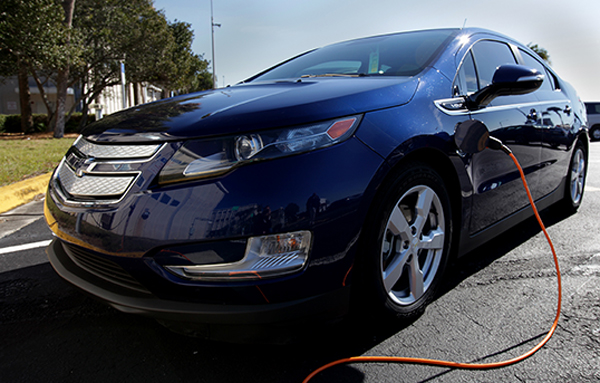A program going on at the governmental space agency NASA to examine ways to lower greenhouse gas emissions by making use of plug-in electric vehicles like the Chevy Volt is seeing some successes. This achievement is happening at a far greater amount then initially expected, according to researchers.
The pilot project, being undertaken at the Kennedy Space Center in Florida, reports reduction numbers 10 times better than hoped for. Working with 10 Kennedy workers who commute daily and plug-in their cars at the center’s charging stations, each individual, in exchange for receiving free charging, fills out a spreadsheet each day documenting how many miles were driven and the road and traffic conditions.

Calculations are made from this information, reportedly showing “a dramatic reduction in the amount of emissions from the daily commute.” It is being compared, it looks like, against your typical emissions generated from gasoline powered cars that might be used in a similar fashion.
“The numbers are really insane,” said Frank Kline with Kennedy’s Sustainability office in a statement. “The program’s first three months only cost $148 [in charging costs], and we eliminated over 15,000 pounds of carbon dioxide into the atmosphere. Over a whole year, we’ll save over 60,000 pounds and that’s just with 10 drivers.”
Now NASA officials are the first to admit that, even with electric cars, the reduction is not 100 percent because even though an electric car itself produces no emissions, the power plant that made the electricity produced greenhouse gases in the process. It is still seen as an improvement over the alternative though.
“The average car puts out about a pound of carbon dioxide per mile,” Kline said. “We’re reducing that by 3/5ths by letting you plug in at the Kennedy Space Center.”
Part of NASA’s focus upon this program results from a presidential order mandating all federal agencies reduce their carbon emissions. For the space agency the goal is a 12.3 percent reduction by 2020. The executive order includes a category that judges how much gas is emitted from sources that are not controlled by the agency, including things ranging from the gases produced by an airliner carrying a NASA employee on assignment to the emissions from an employee’s car during the daily commute.
“The biggest one is federal employee commutes — that’s the easiest target to go after,” Kline said. “If we want to stop you from producing greenhouse gases, electric vehicles don’t produce any greenhouse gases.”